- Home
- Orhan Pamuk
Other Colors Page 33
Other Colors Read online
Page 33
Not long after this particular column appeared, Çetin Altan wrote a collection of short detective stories, of a type that was very common in the early years of detective fiction. With these stories, in the style of G. K. Chesterton’s Father Brown series, he gave up on the idea that society had not given the writer enough life experience to write detective fiction, discarding this view as excessively determinist.
But now let us dwell on his other assertion: “Everyone knows who was killed by whom, and why.” If you bear in mind that many murders are committed in the hope that they will never be discovered, it is immediately evident that this statement cannot always be true. Four hundred years before Çetin Altan spoke of the dearth of murders by unknown assailants in our culture, the Ottoman state (then in the midst of what old-guard historians call the classical age) grew so concerned about murders by unknown assailants that it made an unprecedentedly serious effort to address it to the pertinent legalities. Today we know that Sheikh-ul-Islam Ebussuud Efendi (who was the highest legal authority in the time of Süleyman the Magnificent, and whose decisions took on the aura of classical landmark precedents in the Western sense and influence rulings to this day) was often asked about who should pay the reparations for murders by unknown assailants.
QUESTION: When four villages are at war with one another and one man is killed by a club wielded by another man whose identity is unknown, who pays the blood money?
ANSWER: The people of the nearest village.
QUESTION: If someone gets killed close to a particular town and the murderer cannot be found, who pays the blood money? Is it the entire town, or is it just the people whose houses were close enough to hear the dying man’s screams?
ANSWER: Those living close enough to hear the dying man’s screams.
QUESTION: If a body is found in a religious establishment at a time when the nighttime tenants are not in the shop itself, but in their living quarters, and the murderer cannot be found, who is responsible for the blood money?
ANSWER: Those living close enough to the shop to hear the dying man’s screams. If no one lives close by, then the Treasury—in other words, the state—is responsible.
We can see from these examples that the Ottoman penal code was greatly concerned with murders by unknown assailants, and that the state was aware that it had to take responsibility for such crimes—in other words, pay the blood money—if unable to lay it off on individual citizens. If one of these persons did not wish to take the blame, he was obliged to solve the murder himself. This was to introduce a possibility that we might have to take the blame for every murder that happened around us—the exact opposite of what we see today. To avoid the responsibility for a murder in those days, a person had to be open and alert to every sound and movement around him, to the point of paranoia. Because everyone knew he might be forced to take responsibility for every murder committed in his neighborhood, it is not hard to anticipate the ardor with which the common man would chase after criminals and murderers. In my personal observation, this understanding of responsibility and the anxiety it evokes is still the rule in Istanbul, even with its present population of ten million. Perhaps you could see this as a carryover from the old anxieties about blood money, but the moral vision it suggests—a world in which everyone considers everyone else responsible for everything—is one that Dostoyevsky would have wholeheartedly approved.
But let us not seek to mislead anyone: Today’s Istanbul—today’s Turkey—is a world leader in state-sponsored murder by unknown assailants, not to mention systematic torture, trammels on freedom of expression, and the merciless abuse of human rights. In contrast to Nigeria, Korea, and China, however, Turkey also has a democracy strong enough to allow voters to force the state to refrain from such practices. It is therefore very easy to infer that most electors have shockingly little interest in human rights. What is difficult is to explain why, after four hundred years of responsibility by proximity, and fear of paying the price as their neighbors’ keepers, they now take so little interest when the state is banning books and beating and torturing neighbors in the next building.
I mean only to alert you to this situation. I am not particularly interested in exploring or explaining it. This is probably because I don’t wish to explain away one cultural shortcoming with another. There is in all such subjects something that kills the poet inside us. Sometimes the silence seems to suggest that, as Beckett once said, “There is nothing to be said,” and at other times that “there is far too much to be said.”
It is at times like this that I understand only too well why Turgenev wanted to forget everything to do with Russia, why he went to Baden-Baden and gave himself over to a life that was in every way divorced from her, why he would scold anyone who tried to discuss Russia’s problems with him (as in that famous story), telling such people that he was not in the least interested in Russia and inclined rather to put the place out of his mind forever. This despite the fact that there have been many other times when I have thought that the best thing to do would be to stay in Turkey, lock myself up in a room, and travel into my imagination with the vague intention of writing a book. In fact, I did just that from 1975 to 1982, when murder and political violence, state oppression, torture, and prohibition were at their height. To lock myself up in a room to write a new history—a new story with allegories, obscurities, silences, and never-heard sounds—is, of course, better than to write another history of defects that seeks to explain our defects by means of other defects. To embark on such a journey there is no need to know exactly where you are going; it is enough to know where you do not wish to be.
Let us remain in that locked room I just mentioned, to look at the way in which I work with allegory and obscurity. There is a novel that was translated into Turkish as The Secret of the Yellow Room by the French author Gaston Leroux, best known in recent years for his Phantom of the Opera. The Secret is celebrated by devotees of detective fiction as the first and most brilliant example of the “murder in a locked room.” The door of the room where the murder has taken place is locked, and inside is a body with a set number of suspects. After the murder, someone with a flair for solving puzzles examines the clues and, having established the facts, determines the reasons for the murder. Seventy years after Gaston Leroux wrote The Secret of the Yellow Room, the Spanish author Manuel Vázquez Montalbán wrote a book entitled Murder in the Central Committee, proving that the possibilities afforded by the murder-in-a-locked-room template are not easily exhausted; the locked room in this political detective novel is a conference room for a party resembling the Spanish Communist Party, and when the lights go out the general secretary is killed. Whatever form it takes, murder in a locked room offers a clear understanding of crime, law, and punishment. After the murder, an outside investigator, usually an agent of the state, arrives to question each suspect individually. These interrogations confirm that we are solely responsible to the central authority outside us for the crimes we have committed. The locked room is the best way to convey the idea that we are neither responsible nor guilty as a group, a neighborhood, or a society. We are either guilty as individuals or we are not guilty at all. This world in which we are only responsible to the state for our crimes is a long way from the moral universe that Dostoyevsky dreamed of.
I mentioned the locked room because I wanted to explain why, when we lack even the basic principles that might help us understand our history, we can only connect with it through allegory. What we need is a new variation on the murder-in-a-locked-room story, which I brought up only as an example. In the reworked version, the responsibility for the murder (this being an allegory, we might refer to it simply as the Crime) will attack the owner of the room in which it was committed, along with all those who live there and all those living close enough to hear the dying man’s screams. From the moment we accept this—at an early point in the story—we will proceed as if we are playing chess by new rules, and it will be possible for us to foresee how the murderer or the criminal will
work with the knowledge of our system. It is clear that, to keep from being found, to avoid becoming the sole person responsible, the murderer must act on the assumption that everyone in the vicinity is responsible.
This might bring us to Çetin Altan’s theory, that responsibility for the crime lies inside the culture itself. But if we begin instead with allegories, obscurities, and faint new voices that we don’t quite know how to use, we will at least be able to save ourselves from writing more histories of the defects and the differences that led us to defeat. In my youth, when I was curious to know and understand everything, and read columnists like Çetin Altan with a passion, I had the idea that I might one day become a writer. But I did not, like so many of those with similar dreams, think about what I might write; I thought instead about what stance I should take. My image of the writer drew less from the modernists, who used writing as a sort of vehicle of protection, than from the writers of the enlightenment, who wished to understand everything, show the reader everything. Now I know both approaches to be inadequate and overly derivative. In a society swarming with devils, the devil of modernism is not clever enough. To converse with the devils, the writers of the enlightenment too often accommodated state power and authority. Perhaps I am like most writers: Because I cannot deal in concepts, I look for allegories and tell stories. But I am not complaining, and I think myself lucky, because in my country allegories take the place of philosophy and people believe stories more than they do theories.
CHAPTER SIXTY-SIX
Entr’acte; or, Ah, Cleopatra!
Going to See a Film in Istanbul
Cleopatra went on general release throughout the world in 1964, but, as usual, those of us who lived in Istanbul did not get a chance to see Richard Burton and Elizabeth Taylor’s star turn until two years later. In those days, films came to us several years after release, because Turkish distributors were not able to meet Hollywood’s price for opening-run distribution, but this did not dampen Istanbul’s appetite for the latest gems of Western culture. To the contrary, upon reading the latest gossip about the Burton-Taylor affair, and seeing the titillating news and photographs of Cleopatra’s most revealing scenes, İstanbullus would sigh with impatience and say, “Well, let’s see when it finally gets here.”
When I think back to that day when I first saw Cleopatra, what I remember best—and this is true for quite a few big American productions—is not the film itself but the thrill of watching it. I remember Liz Taylor—who recalled not Cleopatra but her own glittering film career as hundreds of slaves carried her throne with due ceremony; I remember the galleys sailing over a sea of Panavision, and not Mediterranean, blue, and Rex Harrison, who matched my own image of Julius Caesar, teaching his son Octavian how an emperor should walk and deport himself. But above all I remember sitting in my seat and seeing my dreams stretch out before me, from the curtains to the farthest corner, and, in that same space, my self coming into being.
How might I explain what was going on in that space? Like most of Turkey’s Westernized middle class and like most of my generation, I went very seldom to see “domestic” films. When I went to a cinema, I wanted all the usual things—to lose myself in an illusion, to enter a story in darkness, and to be entranced by beautiful people in beautiful places—but also to come face-to-face with the West and to have fun while I was there. When I went home I would repeat in English the withering words that the handsome, cold-blooded hero had uttered in his most dramatic scene. Like so many others of my ilk, I paid careful attention to the way he folded a handkerchief before putting it in his pocket, the way he opened a whiskey bottle, and the way he leaned forward to light a woman’s cigarette; I also kept an eye out for the latest Western inventions, like the transistor radio and the toaster. Not even when they conquered the whole of the Balkans and laid siege to Vienna, not even when they read all of Balzac in the Turkish translations sponsored by the Ministry of Education, had Turks ever come into such intimate contact with the private life of the West as they did at the cinema.
This is what makes going to the films as much fun as going on a trip or getting drunk: In films, we come face-to-face with the Other. Everything is on hand to make this encounter intense. Our eyes wish to see nothing else; our ears will not tolerate the crackling of wrappers or the chewing of nuts. We have come to this seat to forget our troubles, to forget the painful story that is our past and our future, and to forget the anxieties this story brings in its wake. To give ourselves over to the image of the other, and to his story, we are prepared to abandon our own selves, at least for a while. Just as a frame can turn an oil painting into a fetish, the darkness of the cinema excludes all else to frame us and our illusions.
Seven years before I saw Cleopatra, when I was five years old, someone we called the “film man” would come to the empty lot next to our summerhouse. He had a strange device: a portable projector that he set up on a table. If you paid the man five kuruş, you could peek through the eyehole and turn the crank and watch a film that lasted thirty seconds. I remember viewing many scenes from old films cobbled together in this way, but I have not a single memory of what I saw. What remains in my mind is my enchantment when, after waiting my turn, I would put my head under the black cloth draped over the machine to occlude the light and grope in the dark for the eyehole. It is not only that we come face-to-face with the Other in the cinema: What we see makes everything seem otherworldly in the space of an instant.
This is why—whatever the story—the cinema’s teasing Other awakens our desires: for friendship, the pleasures of daily life, happiness, power, money, and sex, and of course for escape from all these things and their opposites. I remember my curiosity and amazement as I inspected the magazine pictures of Liz Taylor as Cleopatra soaking half naked in a magnificent milk bath. I was twelve years old, and her film-star body pulled me into a new world of guilt and desire. My confusion owed a lot to the fearful warnings of lycée teachers, friends who were anxious about tuberculosis, and the popular press: Films, like masturbation, weakened children’s brains and ruined their eyes, and the make-believe world having got hold of them might never let go and so cut them off from reality.
It must have been to dilute the danger and excitement of their encounters with the Other that İstanbullus of the Cleopatra era were inclined to talk during films. Some would warn the pure-hearted hero of the enemy he could not see behind him; others would rain harsh words on the villains, but most would cry out in astonishment whenever the people on the screen displayed a habit or performed a ritual that was universally shocking: “Now look at that! The girl is eating an orange with a knife and fork!” This produced a degree of alienation that even Brecht could never have conceived, and it sometimes took on a nationalist tone. When Goldfinger, surrounded by all the latest technological gadgets and weaponry, offered James Bond Turkish tobacco, saying it was the best in the world, many filmgoers went so far as to applaud the villain. As for the scenes that the Turkish censors found too long and the love scenes from which they removed all indecent images, the silent tension in the audience would dissipate at those moments into loud jokes and laughter.
There were moments when desire seemed close enough to touch—as vivid as the beautiful dreams on the screen but real enough to defy them—and it was perhaps to remind us that we were not alone and helpless in the dark but sitting in a theater with our fellow citizens that they introduced the five-minute intermission that we in Istanbul call the Entr’acte. The custom is for mournful vendors to walk the aisles with ice-cream bars and popcorn while the nicotine addicts in the audience light up; though the West gave up on such intermissions long ago, I have something to say to effete snobs who complain that they are unnecessary and destroy the unity of the film, because personally I owe them a great deal—this essay included.
Fifty years ago, during the Entr’acte at what we know now as the Emek Sinemasi (the Labor Cinema) and then knew as Melek Sinemasi (or the Angel), my mother and father, each out with friends, went out
to the lobby, and here they met for the first time. As I owe my existence to this chance encounter at the cinema, I have no choice but to side with those writers who have spoken so eloquently of their debt to this art.
CHAPTER SIXTY-SEVEN
Why Didn’t I Become an Architect?
I would stand in awe before the ninety-five-year-old building: Like so many from that era, it was unpainted and had lost plaster here and there, and its dark and dirty surface had the air of some sort of frightening skin disease. The signs of age, neglect, and fatigue were what struck me first. But when I began to notice its little friezes, its witty leaves and trees, and its asymmetrical Art Deco designs, I forgot its sickly appearance, thinking instead of the happy, easy life this building had once enjoyed. I saw many cracks and holes in its rainspouts, its weatherboard, its friezes, and its eaves. Inspecting the several stories, including the shop on the ground floor, I could see that, like most buildings built a hundred years ago, it had originally been a four-story construction, the top two stories having been added twenty years ago. There were no friezes, no thick weatherboarding over the windows, and no fine handiwork on the facade. Sometimes these floors would not even be of the same height as those below, nor would their windows be aligned in the same way. Most of these floors had been added very hastily, profiting from home-improvement drives, loopholes in the law, and corrupt mayors turning a blind eye. Perhaps at first sight they had looked modern and clean next to the building’s original century-old facade; twenty years later, their interiors seemed older and more dilapidated than those of the floors below.

 Snow
Snow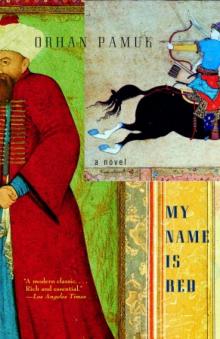 My Name is Red
My Name is Red The Black Book
The Black Book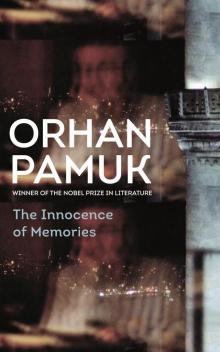 The Innocence of Memories
The Innocence of Memories The White Castle
The White Castle Other Colors
Other Colors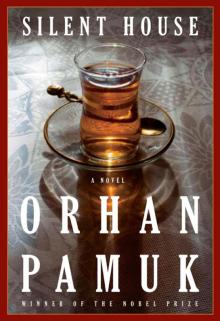 Silent House
Silent House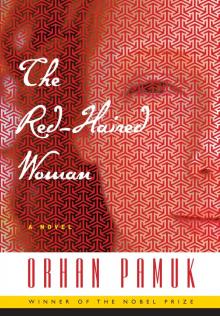 The Red-Haired Woman
The Red-Haired Woman The Museum of Innocence
The Museum of Innocence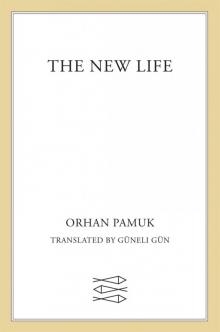 The New Life
The New Life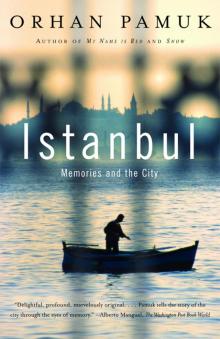 Istanbul
Istanbul